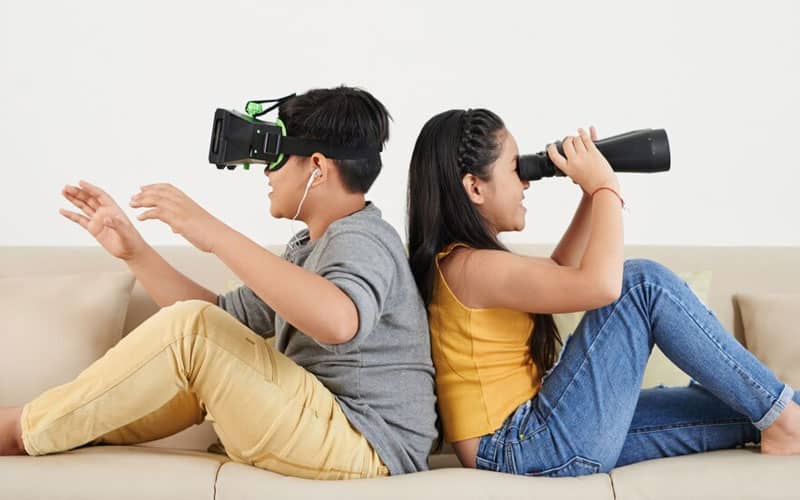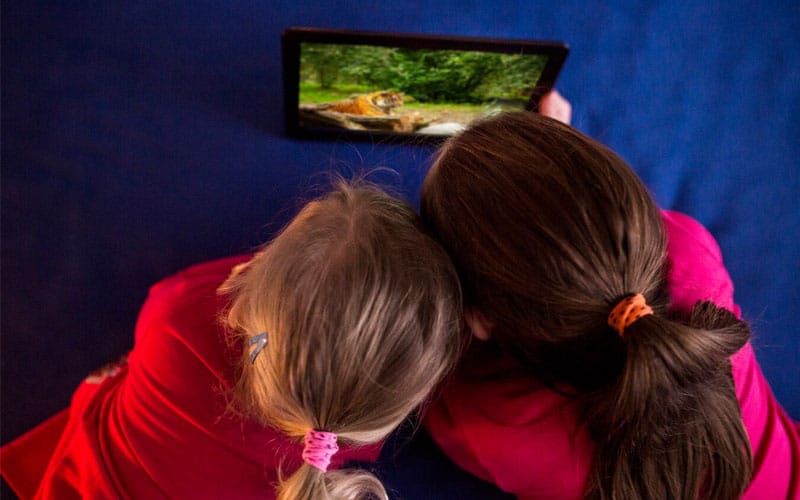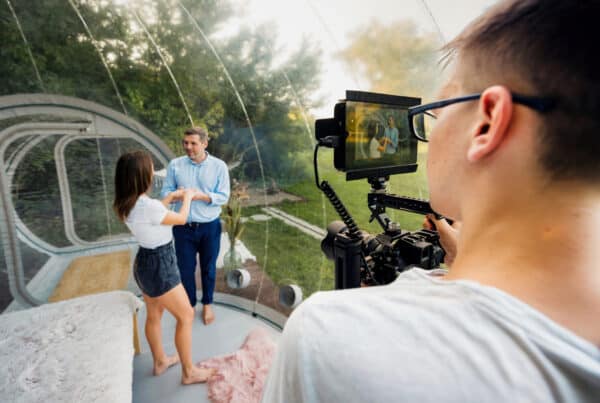In a world where technology continuously reshapes our experiences, virtual tours have emerged as a groundbreaking tool, particularly for educational and recreational purposes. Among the most exciting applications of this technology is the virtual tours for kids—a dynamic and engaging way for children to explore, learn, and interact with the world around them without ever leaving their homes. Whether it’s visiting distant landmarks, exploring the wonders of nature, or diving into historical events, virtual tours offer an incredible opportunity for young minds to expand their horizons. In this comprehensive guide, we’ll delve into how virtual tours can benefit children, explore various types of virtual tours, and provide practical tips for making the most out of these immersive experiences.
The Benefits of Virtual Tours for Kids

1. Enhancing Learning Through Immersion
One of the most significant advantages of virtual tours for kids is the immersive learning experience they offer. Unlike traditional classroom settings, virtual tours allow children to experience subjects firsthand. For instance, instead of reading about ancient civilizations in a textbook, children can virtually visit historical sites like the Pyramids of Giza or the Colosseum, gaining a more profound understanding of these wonders. This kind of experiential learning helps make complex topics more accessible and memorable.
2. Expanding Accessibility to Remote Locations
Virtual tours break down geographical barriers, providing children with the chance to explore places they might never physically visit. Whether it’s the Great Barrier Reef, the Amazon Rainforest, or the Louvre Museum, virtual tours offer a window into distant and diverse environments. This expanded access fosters curiosity and broadens children’s perspectives, allowing them to experience different cultures, ecosystems, and historical periods.
3. Encouraging Interactive Engagement
Virtual tours are designed to be interactive, allowing kids to engage with the content actively. Many virtual tours include features such as clickable hotspots, interactive quizzes, and educational games. These elements keep children engaged and motivated to explore further, turning learning into an adventure rather than a passive activity.
4. Supporting Diverse Learning Styles
Every child learns differently, and virtual tours cater to various learning styles. Visual learners benefit from the rich imagery and video content, auditory learners gain from narrated explanations, and kinesthetic learners engage with interactive elements. This multi-sensory approach helps address the needs of all types of learners and keeps them motivated and involved.
5. Promoting Safe Exploration
In a virtual environment, children can explore new places without the risks associated with physical travel. This safety aspect is particularly beneficial when exploring hazardous environments, historical sites, or other places that might be difficult or unsafe to visit in person. Virtual tours offer a risk-free way for kids to satisfy their curiosity and learn about the world.
Types of Virtual Tours for Kids

1. Educational Virtual Field Trips
Educational virtual field trips are designed to enhance classroom learning by providing immersive experiences related to school subjects. These virtual excursions can take students to museums, science centers, historical landmarks, and more. For example, a virtual trip to a space center might include a tour of a space shuttle, interactive displays about planets, and live Q&A sessions with astronauts.
2. Nature and Wildlife Tours
Nature and wildlife virtual tours offer children the chance to explore the natural world. These tours might include visits to national parks, wildlife reserves, and underwater ecosystems. Kids can observe animals in their natural habitats, learn about conservation efforts, and discover fascinating facts about flora and fauna. For instance, a virtual tour of the Serengeti might allow children to see lions, elephants, and zebras up close while learning about their behaviors and habitats.
3. Historical and Cultural Experiences
Virtual tours of historical sites and cultural landmarks provide a unique way for kids to learn about history and cultural heritage. These tours can transport children to ancient cities, significant historical events, and cultural festivals. For example, a virtual tour of ancient Rome might include interactive visits to the Forum, the Pantheon, and the Colosseum, complete with historical context and engaging narratives.
4. Science and Technology Explorations
Science and technology virtual tours offer interactive experiences related to various scientific disciplines. These tours might include visits to research laboratories, space stations, and technological innovations. Kids can explore the workings of a large particle accelerator, take a virtual tour of a space station, or discover the latest in robotics and artificial intelligence.
5. Arts and Creative Workshops
Virtual tours can also introduce children to the world of arts and creativity. These experiences might include virtual visits to art galleries, interactive art workshops, and behind-the-scenes looks at creative processes. For example, a virtual tour of an art museum might allow kids to explore famous artworks, participate in virtual art classes, and learn about different artistic techniques.
How to Make the Most Out of Virtual Tours for Kids

1. Choose Age-Appropriate Content
When selecting virtual tours, it’s essential to choose content that is appropriate for the child’s age and developmental level. Ensure that the language, concepts, and interactivity align with their abilities and interests. Many virtual tour providers offer content tailored to different age groups, so you can find experiences that match the child’s educational needs and curiosity.
2. Integrate Virtual Tours with Learning Objectives
To maximize the educational value of virtual tours, integrate them with learning objectives and classroom activities. For instance, if a child is studying dinosaurs, a virtual tour of a natural history museum with a focus on paleontology can complement their studies. Incorporate discussion questions, writing prompts, and related activities to reinforce what they’ve learned during the tour.
3. Encourage Active Participation
Encourage children to actively participate in the virtual tour by asking questions, taking notes, and engaging with interactive elements. Encourage them to explore different areas, click on hotspots, and participate in any available quizzes or games. Active participation enhances learning and keeps kids engaged throughout the experience.
4. Discuss and Reflect
After the virtual tour, take time to discuss and reflect on the experience. Ask the child about their favorite parts, what they learned, and any questions they might have. This discussion reinforces learning and provides an opportunity to delve deeper into topics of interest. Reflecting on the experience also helps consolidate their understanding and encourages critical thinking.
5. Incorporate Additional Resources
To enrich the virtual tour experience, consider incorporating additional resources such as books, documentaries, or online articles related to the tour’s content. These supplementary materials can provide further context, deepen understanding, and offer additional learning opportunities. For instance, after a virtual tour of a historical site, a related book or documentary can provide more in-depth information.
6. Ensure Technology Accessibility
Ensure that the necessary technology is accessible and functional for the virtual tour. This includes a reliable internet connection, compatible devices (such as computers, tablets, or VR headsets), and any required software or apps. Proper preparation helps avoid technical issues and ensures a smooth and enjoyable experience for the child.
7. Encourage Exploration Beyond the Tour
Virtual tours can spark curiosity and inspire further exploration. Encourage children to follow up on their interests by exploring related topics, participating in hands-on activities, or visiting local museums or exhibitions. This extended exploration helps reinforce what they’ve learned and fosters a lifelong love of learning.
Examples of Popular Virtual Tours for Kids

1. Google Earth Education
Google Earth offers a range of educational virtual tours that allow kids to explore landmarks, natural wonders, and historical sites around the world. The platform includes interactive features such as Street View, 3D imagery, and educational layers that provide additional information about various locations.
2. National Geographic Kids
National Geographic Kids offers virtual tours and interactive experiences related to wildlife, nature, and science. The platform provides engaging content, including videos, quizzes, and articles that complement virtual tours and enhance learning.
3. The Smithsonian Institution
The Smithsonian Institution provides virtual tours of its museums and research centers, including the National Museum of Natural History, the National Air and Space Museum, and the National Museum of American History. These tours offer interactive exhibits, detailed information, and immersive experiences that bring the Smithsonian’s vast collections to life.
4. Virtual Reality Field Trips
Several organizations offer virtual reality field trips designed specifically for educational purposes. These VR experiences cover a wide range of topics, including space exploration, underwater adventures, and historical events, providing an immersive and interactive learning experience.
Conclusion
Virtual tours for kids offer an exciting and innovative way to explore, learn, and engage with the world. By providing immersive and interactive experiences, virtual tours make learning more engaging and accessible, allowing children to explore distant locations, discover new subjects, and experience educational content in a dynamic and memorable way.
From educational field trips and nature explorations to historical journeys and creative workshops, virtual tours open up a world of possibilities for young learners. By integrating virtual tours into their educational experiences, parents and educators can inspire curiosity, foster a love of learning, and provide children with valuable opportunities to explore and discover. As technology continues to advance, virtual tours will undoubtedly remain a powerful tool for enriching children’s education and expanding their horizons.
Inspire young minds with virtual tours designed for kids! Explore world wonders, museums, and wildlife from home through interactive, educational experiences. Perfect for learning and adventure without travel. Contact us today to start an exciting journey that makes discovery fun and accessible for children everywhere!




